Ask A Heroine: Welcome to the experts corner, love. This is where you ask your burning questions on business and life, and receive personal advice from the best. Each month we feature amazing industry Heroines and their wise video answers to your deepest inquiries. Here, questions give way to solutions, insights transform into action, and more »
Heroines of History: Margaret Sanger – A Champion of Women’s Independence
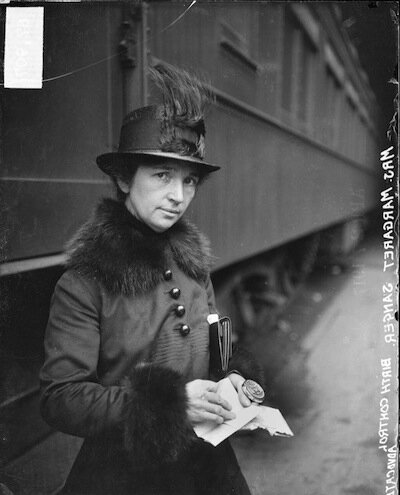
UNITED STATES – CIRCA 1917: American birth control activist Margaret Sanger (1879 – 1966) standing in a train station in Chicago, 1917. From the Chicago Daily News collection. (Photo by Chicago History Museum/Getty Images)
Heroines of History: These are American women, and their actions were not motivated by fortune or fame. There was no glory, and in many cases very little recognition for their activities. They simply did what needed to be done, and they did so in an extraordinary way. They roared without making a sound, and it is time that they were given a voice. Margaret Sanger, we hear you.
Margaret Sanger was born on September 14, 1879, in Corning, New York, to Michael and Anne Higgins. She was the sixth of eleven children, and with her father’s meagre salary as a stonemason, the family slipped further and further into poverty with the birth of each new child.
In total, Anne endured eighteen pregnancies, seven of which ended in miscarriage. Anne died at the age of 50, and Margaret always attributed the immense toll that such extensive childbearing wreaked on her mother’s body as the main cause of her early death. The abject conditions of her childhood left an indelible mark on Margaret’s conscious that would color much of her future life.
Her family unable to provide any support, Margaret struck out on her own and attended Claverack College, Hudson River Institute, and then finally studied nursing at White Plains Hospital. In 1902, Margaret married William Sanger but insisted on continuing to work. The couple settled in New York City and over the years they had three children. She was a nurse on the Lower East Side, which housed a largely immigrant and poor population.
She found that these conditions mirrored her own upbringing, mothers with starving children and inadequate healthcare who were faced with one pregnancy after another. Out of desperation, many of these women sought out abortions from disreputable doctors or tried to end their pregnancy on their own using implements such as knitting needles.
More often than not, Margaret would be called in after the fact to nurse these women back to health, because inevitably the procedure had been done wrong. Margaret found herself confronted on a regular basis by women who were desperate to stop having children.
These conditions incensed Margaret who, because of her nursing background, knew there was information and contraception available that could help these women. However, because of the Indecency Laws, her hands were tied.
In March of 1873, Congress passed the Comstock Act, which deemed that contraceptive information and devices were indecent and as such were barred from being sent through the mail. Shortly after, the state of New York followed suit in passing Section 1142 of the State Penal Code, stating that it was illegal to possess, provide, or tell someone where they could obtain prohibited items, which included anything that could prevent conception.
This law stood untouched until 1881, when Section 1145 was passed, which exempted licensed physicians from Section 1142 as long as the information or devices were intended to prevent or cure disease. This allowed doctors to prescribe their male patients condoms in order to prevent venereal disease but continued to keep contraception out of the hands of women.
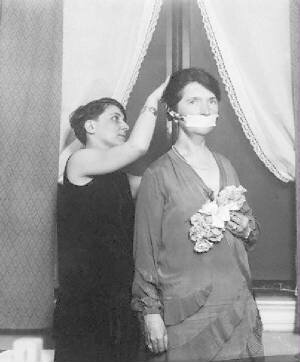
Penalties for breaking these laws were harsh and could result in up to a year in prison and a fine of up to $1,000 for each offense. For perspective, today that would be the equivalent of a $28,000 fine. Because of this, the only contraceptive method most doctors would discuss with women was abstinence. Unfortunately, at this time the majority of married women had absolutely no say in whether or not, or how frequently, they had sex with their husbands. Abstinence was not an option within their control.
While Margaret’s work was filled with frustrations, her home life was very different. In 1910, Margaret and her husband moved to Greenwich Village and became immersed in the Bohemian lifestyle. Margaret joined the Women’s Committee of the New York Socialist Party and the Liberal Club. She also actively supported the Industrial Workers of the World Union and participated in their strikes.
It was in this atmosphere of rebellion that Margaret started writing a Newspaper called “What Every Girl Should Know.” She had been writing articles for “The Call,” a socialist paper, when her work was censored for the first time. She had written an article about venereal disease and her publishers deemed it to be obscene and vulgar. Not to take this rebuff lying down, she produced her own paper. This paper contained not only information about venereal disease but also posited the idea that women could be more than childbearing machines.
This paper inspired Margaret to produce a more substantial publication, “The Woman Rebel,” which was first published in 1914. Despite the fact that she was only able publish eight issues, Margaret didn’t just rock the boat, she effectively capsized it. Her publication contained not only her own writings, but also those from leftist writers about labor reform, marriage, prostitution, and revolution.
For her part, Margaret believed that women had the power and influence to change the social structure of our society. However, they could only do so if they gained sexual equality, and the only way to gain sexual equality was through control of reproduction. It was in “The Woman Rebel” that Margaret coined the term ‘birth control,’ and openly stated that women should be able to enjoy sex without fear of pregnancy.
She argued that women should be able to plan their families to not only coincide with their income but also to allow adequate recovery time from the rigors of carrying and birthing a child. Moreover, Margaret used this publication as a means to unite women and rally them to challenge the anti-obscenity laws ban on contraception. She didn’t know it at the time, but she had begun one of the major reform movements of the twentieth century that would fundamentally alter the lives of all women.
Margaret received a cease and desist order for violating the Comstock Act shortly after the publication of her first issue. She ignored this and all of the other orders that followed. Realizing that something more drastic was called for, authorities indicted Margaret in August of 1914 for violation of the obscenity statutes in three issues of “The Woman Rebel.”
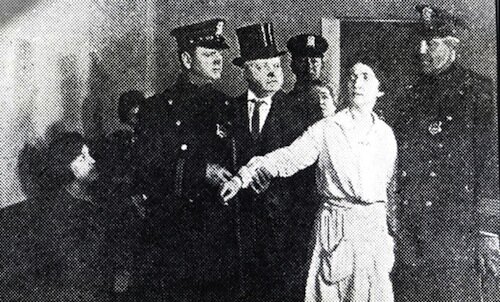
Facing a sentence of up to 45 years in jail, Margaret was able to get her trial postponed until October, and then, under the alias Bertha Watson, fled the country. Before fleeing, Margaret prepared a pamphlet entitled “Family Limitation” and had 100,000 copies made. This leaflet, which contained graphic details and instructions for various methods of birth control, was widely disseminated shortly after she was out of the country.
The pamphlet sparked debate across the country about birth control and provoked not only the U.S. Attorney General but also Anthony Comstock, who was the father of the Comstock Act. Comstock enlisted agents to track down transgressors, even arresting and imprisoning William Sanger for 30 days. However, the harder Comstock fought, the more publicity Margaret’s cause received.
While the popularity of her movement grew in the United States, Margaret visited contraception clinics in Holland; wrote papers on English, French, and Dutch contraception methods; and spent time studying at the British Library under the guidance of sex psychologist Havelock Ellis. She learned all she could about European methods, especially diaphragms, which she began importing to the U.S.
During this time, she and her husband formally separated, freeing Margaret to enjoy several affairs while abroad. She was definitely a proponent of practicing what she preached.
In all, Margaret spent 13 months in exile in Europe, before returning to the U.S. in October of 1915. She felt that her movement had gained enough momentum and she was ready to face trial.
Tragically, during the trial preparations, the Sanger’s five-year-old daughter Peggy fell ill with pneumonia and died. This created an outpouring of sympathy and a media frenzy around Margaret’s trial and the issue of birth control. Sensing that the only outcome of proceeding would be to turn Margaret into a martyr, the U.S. Attorney General dropped all charges in February of 1916.
If he was hoping that Margaret had learned her lesson and would quietly return to her remaining children, his hopes were sadly misplaced. Upon leaving custody, Margaret embarked on a tour to promote her movement. She was arrested in several cities for indecency but, like before, every arrest resulted in additional publicity.
When she returned to New York from her tour, Margaret began preparations for her most controversial act yet. With the help of her sister, Ethel Bryne, who was also trained as a nurse, and an assistant named Fania Mindell, Margaret opened a family planning contraception clinic in Brooklyn on October 16, 1916. It was the first establishment of its kind, and it quickly had a line out the door of women waiting to be seen. These women were provided with information, counseling, diaphragms, condoms, and any other contraception that Margaret had been able to get her hands on.
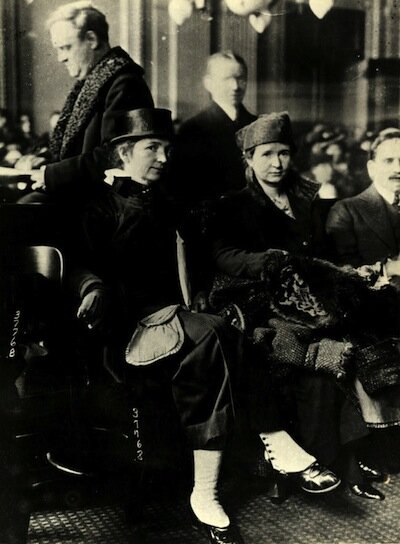
The line of women waiting still had not abated when, ten days later on October 26th, there was a raid on the clinic and Margaret, Ethel, and Fania were all arrested. After spending a night in jail they were released on bail. Fania was charged with disturbing the peace and fined fifty dollars, but Margaret and Ethel did not get off so easy and were slated to face trial. They received immense support from the community leading up to and during their trials.
Ethel’s was first, and on January 22, 1917, she was sentenced to 30 days in the workhouse. Not only did Ethel protest her punishment by refusing to do any work, but she also went on a hunger strike. She was one of the first people in the United States to use this tactic and subsequently also became the first person to be force-fed.
Fearing for her life, Margaret and other prominent women in the city pleaded with authorities for Ethel’s release. A judge agreed to release her on the stipulation that Ethel withdraw from the birth control movement and never break the law again. Margaret agreed to this stipulation in her sister’s name, which freed her and irreparably damaged their relationship. Ethel withdrew from the spotlight, but not before accusing Margaret of being a “glory-hog” and agreeing to the stipulations for her own benefit.
Margaret was also convicted, but after serving her 30 days, she filed an appeal. That appeal came before Judge Frederick E. Crane in 1918. In a pivotal decision, he declared that while it was still against the law for a lay-person to distribute contraception or information about contraception, he broadened the definition of ‘disease’ as stated in Section 1145. Originally the term ‘disease’ referred to venereal disease, something that female contraception did nothing to prevent and was, therefore, still illegal.
Crane changed this by decreeing that doctors could legally discuss and prescribe contraception not only in order to prevent venereal disease but also to prevent women’s ailments. While this broadened definition only applied to married women, it was a huge step forward.
This victory was gained not only from the publicity of the trials but also from Margaret’s publication “The Birth Control Review,” which she started while in prison. Margaret served as editor-in-chief until 1928. “The Birth Control Review,” like Margaret’s other publications, provided commentary and information on women’s health and reproduction. Unlike her previous publications, this one also included articles that openly embraced the eugenics movement.
During the first quarter of the twentieth century, the United States became swept up first in the theories of eugenics and then shortly thereafter in the theory of behaviorism. These two theories are commonly referred to as the Nature vs Nurture debate.
Unlike the behaviorists, many eugenicists embraced the concept of birth control as going hand in hand with their theories. By formally associating the birth control movement with the popular eugenics movement, Margaret Sanger gained a whole new audience, popularity, and acceptance for her taboo beliefs. It is not clear whether Margaret was a eugenicist herself or merely saw an opportunity and jumped on the bandwagon to gain exposure for her cause.
In 1921, Margaret organized the first American Birth Control Conference in New York City. The goal of the conference was to bring together not just birth control advocates but also people from different fields who were in essence working toward the same goals. Attendees included noted scientists, social workers, eugenicists, physicians, and socialites.
In her opening speech, Margaret posited to the group that providing women with the ability to control reproduction served to address everyone’s goals, “namely a better nation and the banishment of disease, misery, poverty, delinquency and crime.” The conference was largely a success and culminated in the founding of the American Birth Control League (ABCL), with Margaret as president.
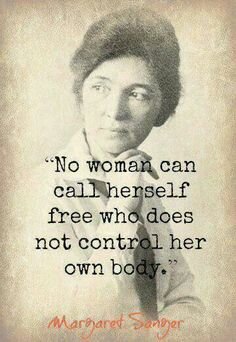
The dark spot of the conference came on the last day, when there was to be a public meeting at the Town Hall Theater titled, “Birth Control – Is It Moral?” This meeting was to feature a speech by Dr. Karl Reiland, a Rector at Saint George’s Church in New York City, and then a discussion led by Sanger and Harold Cox, a British economist.
Already having his own opinions on birth control, the police captain locked the doors to the theater to prevent the meeting from taking place. However, he arrived too late and inadvertently locked some people inside, requiring him to unlock the doors so they could leave. When he did so, Margaret and others in the crowd rushed the door and forced their way in.
Margaret made her way to the stage and was attempting to address the people when she was arrested, alongside Mary Windsor, a council member of the ABCL, for disorderly conduct. They were taken to the 47th Street Police Station, where they were released for lack of evidence, but not before attendees of the conference marched down 43rd Street to Broadway, where police had to call in reinforcements to quell the riot that had broken out. The arrest of their leader was no longer enough to silence the birth control movement.
In 1922, Margaret married oil businessman J. Noah H. Slee, but she retained the last name Sanger. Her new husband provided funding for a lot of Margaret’s reform work, including the Birth Control Clinical Research Bureau (Bureau).
Opened in 1923 in New York City, the Bureau became the first of a nationwide network of clinics that opened during the 1920s and 30s. The clinic maintained its legality by using the loophole provided by the Crane Decision of 1918. It was run by licensed physician Hannah Stone, and she discussed and prescribed contraception to patients wishing to space their children out or avoid the general debility caused by pregnancy.
The Bureau soon saw over 10,000 patients a year and provided training for thousands of doctors and nurses.
As a research facility, they also kept detailed notes on each patient, including what method of contraception they were using – diaphragm and jelly, condom, or rhythm – and what the success and/or failure rate of each method was. They also evaluated materials and tested new devices for manufacturers around the world.
This information was invaluable for the medical community and contraception manufacturers. It was also this work that leant the birth control movement widespread credibility amongst medical professionals for the first time. Despite this, there were still plenty of people working to thwart the movement. The Bureau was accused of breaking the law on several occasions. The worst occurred in April of 1929, when police raided the clinic.
They confiscated medical records and equipment and arrested Dr. Stone and four other workers.
A judge dismissed all charges because of a lack of evidence, which was followed by an outcry from the established medical community of New York City demanding that all records and equipment be returned to the clinic immediately. Once more, the action of the police provided the birth control movement with ample publicity and an influx of support.
While Dr. Stone was running the Bureau, Margaret travelled to Geneva, Switzerland, in 1927 to help organize the first World Population Conference, the aim of which was to promote birth control around the world as a means to help control population. She used the Bureau as a model for how other countries could implement the birth control movement.
After returning to the United States, Margaret formed the National Committee on Federal Legislation for Birth Control (Committee). Her first point on the agenda was the repeal of the Comstock Laws. The Committee spent the early 1930s lobbying and losing. It wasn’t until 1936 that they were able to tally their first win.
In the United States v. One Package, the U.S. Court of Appeals stated that physicians were allowed to import, without fear of confiscation, “One Package, containing 120, more or less, Rubber Pessaries to Prevent Conception.” This ruling fully legalized doctor prescribed contraception and opened the door for further changes.
The 1930s also saw the doors opened for Black women to access contraception and family planning. As the Civil Rights era was still three decades away, Black women were not seen by the same doctors as their white counterparts. Therefore, separate clinics needed to be established.
With the help of civil rights activist W.E.B. Dubois, the Urban League, and the Black newspaper Amsterdam News, a family planning clinic was opened in 1930 in Harlem, New York, to treat Black women. This clinic was run by a Black doctor and a Black social worker. They provided the same resources and information and collected the same research as the white clinics.
With the proven success of this clinic, the Negro Project was formed in 1939. This project added Black clinics all over the south. Margaret urged the project’s director that these clinics could not be run by a white staff, as there was a fully justifiable mistrust of white clinicians by the Black populace. Therefore, these clinics needed to be staffed similarly to the Harlem clinic.
Margaret also worked to cobble together the Who’s Who of Black leaders to speak out in support of the clinics. She already had the support of Dubois, and amongst others, she was able to get the backing of Reverend Adam Clayton Powell Jr. of Harlem’s Abyssinian Baptist Church, journalist Ida Wells, sociologist E. Franklin Frazier, and educator Mary McLeod Bethune.
As with their white counterparts, Margaret believed that making birth control readily available to Black women would serve to empower them and give them control over how they lived their lives.
Margaret retired in the early 1940s, but retirement proved not to suit her. She remained active in the birth control movement and helped to form the Planned Parenthood Federation of America.
By 1946, Margaret was working full-time once more and founded the International Committee on Planned Parenthood, which would later become the International Planned Parenthood Federation. She served as the president of this organization from 1952-1959. As president, she addressed birth control issues in both Europe and Asia.
Back in the United States, Margaret was quickly becoming one of Planned Parenthood Federation of America’s biggest critics. This started at the formation of the organization because she disliked the name. She preferred the name American Birth Control League, but at its founding, in her semi-retired capacity, she did not hold enough influence to sway the decision.
Margaret was never known to be a team player, and when she didn’t get her way, she often went off and did what she wanted on her own. The same happened with Planned Parenthood. In the early 1950s, Margaret wanted to work with and support scientist Dr. Gregory Pincus.
For years, Margaret had wished for some sort of ‘magic pill’ that a woman could take as birth control. It so happened that Dr. Pincus was working on just such a pill. Dr. Pincus had been fired from Harvard for experimenting with in-vitro fertilization and as such was working on his own and was in desperate need of funding. As there hadn’t been an improvement to birth control methods since 1869, Margaret wanted Planned Parenthood to help with that funding. The leadership of Planned Parenthood turned down the request.
Therefore, Margaret struck out on her own to find funding, which she did from the heiress Katharine McCormick. With Katharine’s funding, Margaret’s influence, and the help of a Catholic OB-GYN named John Rock, Dr. Pincus was able to produce and test the first oral birth control pill. It is not entirely clear how much of this research and testing was done legally and how much was done illegally, but the end product proved to be both safe and effective leading to the FDA approving the first oral birth control pill – Enovid – in 1960.
While this was a major step forward for the birth control movement, the true victory came in 1965, when the Supreme Court ruled in Griswold v. Connecticut that not only was birth control legal for married couples, but that the private use of contraceptives was a constitutional right.
They didn’t know it at the time, but this ruling was the cornerstone that would make Roe v. Wade possible in 1973. With these victories, Margaret retired to Arizona, where she died in a Tucson nursing home on September 6, 1966, at the age of 86.
In recent years, the work of Margaret Sanger has been sullied by reports of her being a racist because of an affiliation with the Ku Klux Klan and because she was a proponent of eugenics. Part of the success of the birth control movement is due to the fact that Margaret would speak to any group of people willing to listen to her. Therefore, when she was invited to speak to the women’s branch of the KKK in Silver Lake, New Jersey, she accepted.
In her autobiography, published in 1938, she described the event as “one of the weirdest experiences I had in lecturing.” That lecture was her one and only documented experience with the KKK.
In regard to her support of eugenics, there is an argument that she sought to eliminate Black people through her Negro Project. This was not the intention of the project, nor the intentions of Margaret Sanger, who had never been shy or secretive about her beliefs. She published them regularly in her papers, books, and autobiography.
The Negro Project was intended to provide the same empowerment through reproductive choice to Black women that was being provided to white women.
Furthermore, Martin Luther King Jr. accepted the Margaret Sanger Award from Planned Parenthood in 1966. Unable to accept the award in person, it was accepted by his wife who read his speech, which included the following sentiment, “There is a striking kinship between our movement and Margaret Sanger’s early efforts. She, like we, saw the horrifying conditions of ghetto life. Like we, she knew that all of society is poisoned by cancerous slums. Like we, she was a direct actionist – a nonviolent resister.”
Martin Luther King Jr., like many other Black leaders, saw Margaret Sanger’s work for what it was; an opportunity for women to be more than childbearing machines.
Margaret Sanger, this is in your honor.
Thank you for all that you did.
Comments
comments







No comments yet.